Cultural orienteering – Following German footpath in Belgrade
The Orienteering Club organized a walk around Belgrade on October 17th entitled Following German footpath in Belgrade. The goal was to get students acquainted with the clues the Germans left in Belgrade since World War I. We first visited the German Cultural Center (Goethe Institute) where students had the opportunity to say something in German become members of the library. The next stop (which we only talked about) was the German Academic Exchange Service DAAD, which deals with scholarships for study and research in Germany. We observed the army home from Republic Square, and it was interesting to us because it was in this building that the German Gestapo Police Center was located in this building since the summer of 1942.
In the basement, which today has been converted into a library, there were twenty solitary confinements that were intended for political dissenters. We headed towards Slavija, a place that during the occupation connected the Sajmište camp with the Jajinci execution site, an intersection through which several trucks with gas chambers went daily. In the fall of 1942, the Quisling Administration of the City of Belgrade, a local local administration under Nazi command, was tasked with carrying out massive construction work and drawing a regulated roundabout on Slavija, according to blueprints from the Reich. This one we are moving to today. Led by a certain engineer Maksimović, the city government begins to work. While on the ground work was done to harmonize streets and traffic, a large sewage collector was erected underground, with the waste and underground waters of Vračar and Zvezdara running down Nemanjina Street – below it – all the way to the Sava. The outlet of that collector was, and still is, with everything it relates to every day, where Sava Promenade is today.
The massive size of this collector is one of the things that makes it impossible to realize the idea of our underground pedestrian passage around Slavija today. It can’t be realized, since the Germans put in mammoth tubes that are neither worth moving nor taking off.
After Slavija Square, we went down Kneza Miloša Street where our first stop was the Ministry of Foreign Affairs building. It was in this building during the German occupation that Radio Belgrade was called Soldatensender Belgrad, or shortly Sender Belgrad, as an extended arm of Hitler’s propaganda. The news aired in both Serbian and German languages, aiming to shape reality at the will of the Third Reich, although only eight days before the April 6 bombing the proclamation of the newly crowned King Peter II was broadcast. Sender Belgrad had a multiple role. In addition to the aforementioned shaping of reality, it was also engaged in mediating German and Serbian culture. The program ended around 10pm with a song by Lili Marlen.
Today’s Savski venac municipality at 69 Kneza Miloša Street, next to the Canadian Embassy building, acts as a plain, unobtrusive five-story building. Built in 1940 as an exclusive building in which there were ten apartments with the most expensive rent in Belgrade at the time, and where the lobby was the first luxury in door fountain, it did not live in that role. Immediately after the occupation, the TOT Organization, a kind of Nazi Directorate for Urban Construction Land or the Agency for Development, moved into it, commanding the economic exploitation of mineral and natural resources in the occupied areas of the entire Balkans (Serbia, Macedonia and Greece), as well as building a transport network for the needs of the Wehrmacht and its war effort. We headed to school, and stopped in front of the entrance where a very unusual monument was erected. Not because of his appearance, but because of the fact that the enemy soldier, Field Marshal August von Makenzen in 1915 ordered him to be erected to the casualties of the Serb soldiers. Also nearby is a Pioneer Town, which is used as a playground and where many recreational classes take place. However, the cottages (similar to those in the Alpine villages) were not built for this purpose but for the needs of the German Wehrmacht during World War II. We finished our walk here
Gordana Đorđević, profesorka nemačkog jezika

